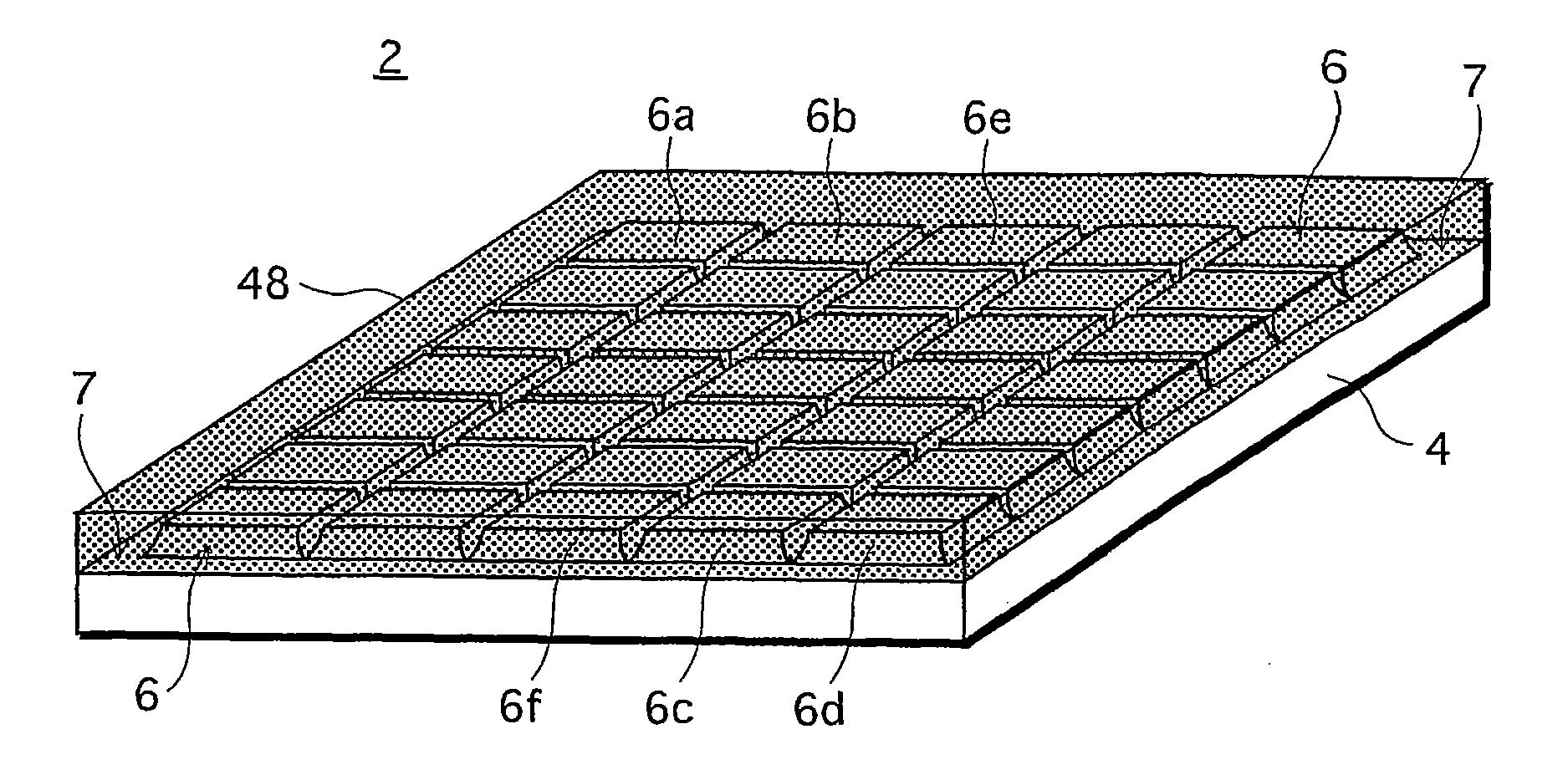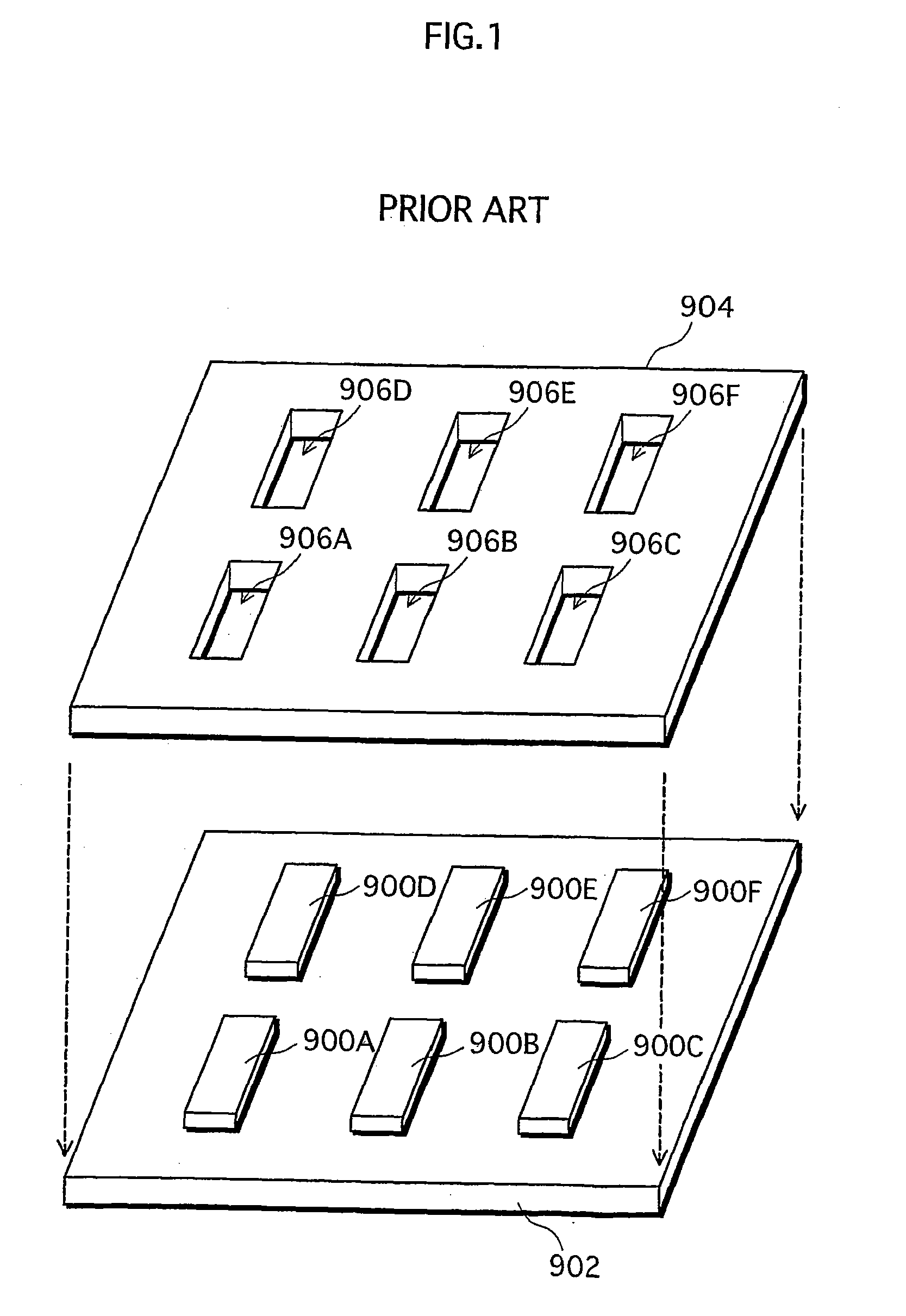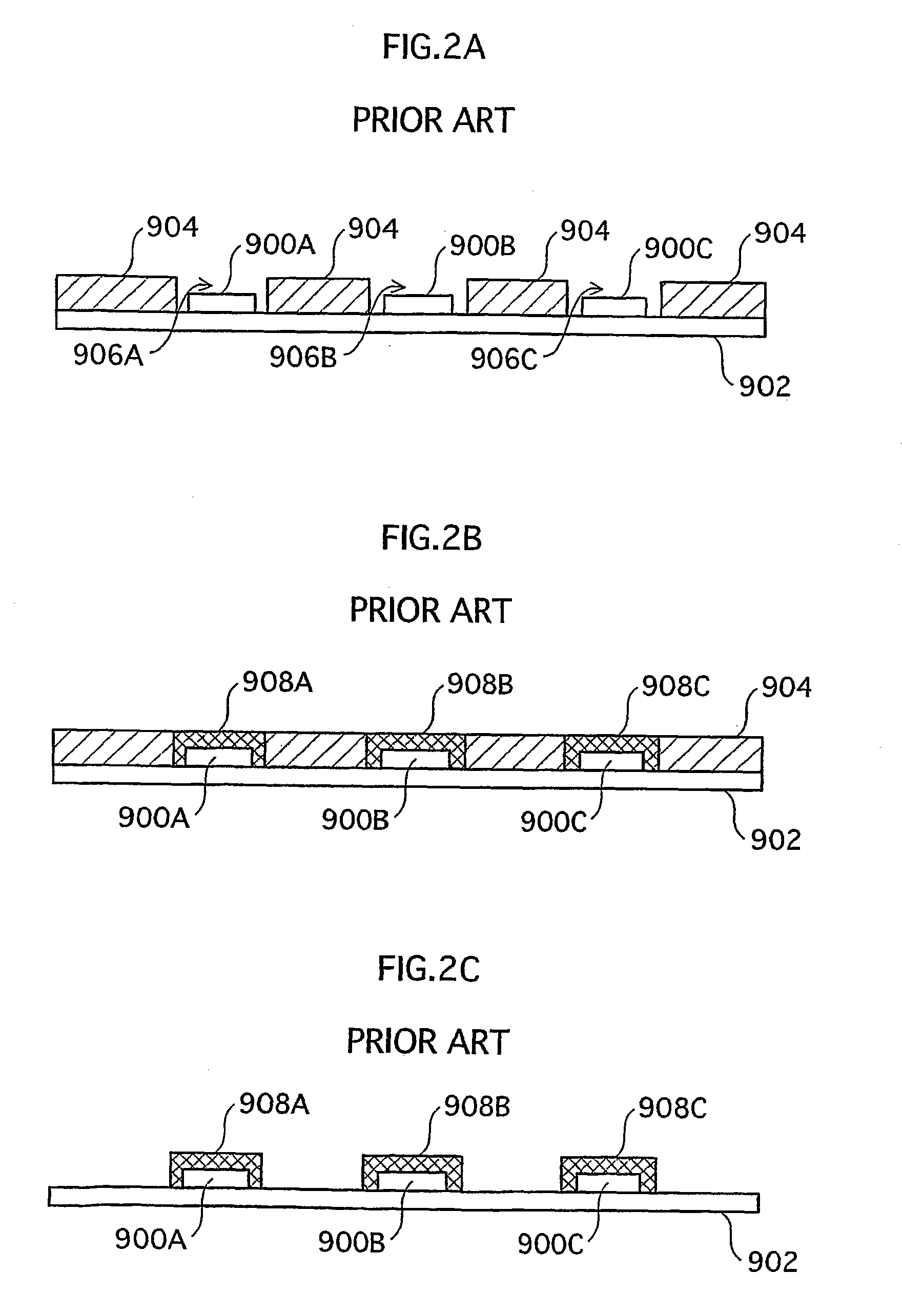Semiconductor light emitting device, lighting module, lighting apparatus, display element, and manufacturing method for semiconductor light emitting device
a semiconductor light emitting and semiconductor technology, applied in semiconductor devices for light sources, discharge tubes, lighting and heating apparatus, etc., can solve the problems of insufficient light reflection on the wall of the reflective hole, inability to achieve desired light collection efficiency, and inability to produce small amounts of light. to achieve the effect of efficient collection
- Summary
- Abstract
- Description
- Claims
- Application Information
AI Technical Summary
Benefits of technology
Problems solved by technology
Method used
Image
Examples
first embodiment
[0051]FIG. 3A is an external perspective view illustrating a construction of a white LED array chip 2 which is one type of a semiconductor light emitting device (hereinafter simply referred to as an LED array chip 2). FIG. 3B is a plan view illustrating the LED array chip 2. FIG. 3A is mainly intended to show how LEDs 6 (described later) are arranged, and therefore does not show minute depressions and protrusions on surfaces of the LEDs 6. FIG. 3B does not show a phosphor film 48 (described later). It should be noted that a reduced scale for each constituent is not uniform in any of the drawings including FIGS. 3A and 3B.
[0052]As shown in FIGS. 3A and 3B, the LED array chip 2 is formed in such a manner that the LEDs 6 are arranged in a matrix of N rows and M columns (in the first embodiment, a matrix of seven rows and five columns, in total 35 LEDs 6) on a non-doped (highly resistant) SiC substrate 4 which is a semiconductor substrate (hereinafter simply referred to as an SiC substr...
second embodiment
[0086]FIG. 10 is an external perspective view illustrating a construction of an LED array chip 302 relating to a second embodiment, which is one type of a semiconductor light emitting device.
[0087]The LED array chip 302 relating to the second embodiment basically has the same construction as the LED array chip 2 relating to the first embodiment (shown in FIGS. 3 to 5), except for a configuration of an uneven light extraction surface of each LED to enhance a light extraction efficiency, and a configuration of an SiC substrate. Common constituents of the LED array chip 302 are identified by the same reference numbers as in the first embodiment. The following description includes a brief or no mention of those common constituents, and mainly focuses on the different configurations between the LED array chips 2 and 302.
[0088]As shown in FIG. 10, a non-doped (highly resistant) SiC substrate 304 which constitutes the LED array chip 302 (hereinafter simply referred to as an SiC substrate 3...
third embodiment
[0109]According to the first and second embodiments, the anode electrode (34 and 334) and the cathode electrode (32) of the LED array chip (2 and 302) are electrically connected to the power supply terminals (36 and 38, 336 and 338) on the back surface of the SiC substrate (4 and 304) by conductive members including the plated-through holes (42 and 46, 342 and 346) provided in the SiC substrate (4 and 304). According to a third embodiment, however, such conductive members include conductive films formed on side surfaces of an SiC substrate, instead of the plated-through holes (42 and 46, 342 and 346). An LED array chip 402 relating to the third embodiment basically has the same construction as the LED array chip 302 relating to the second embodiment, except for that conductive films are provided instead of the plated-through holes (42 and 46, 342 and 346) and that the removed portions 304a and 304b are not created. Common constituents of the LED array chip 402 are identified by the ...
PUM
 Login to View More
Login to View More Abstract
Description
Claims
Application Information
 Login to View More
Login to View More - R&D
- Intellectual Property
- Life Sciences
- Materials
- Tech Scout
- Unparalleled Data Quality
- Higher Quality Content
- 60% Fewer Hallucinations
Browse by: Latest US Patents, China's latest patents, Technical Efficacy Thesaurus, Application Domain, Technology Topic, Popular Technical Reports.
© 2025 PatSnap. All rights reserved.Legal|Privacy policy|Modern Slavery Act Transparency Statement|Sitemap|About US| Contact US: help@patsnap.com



